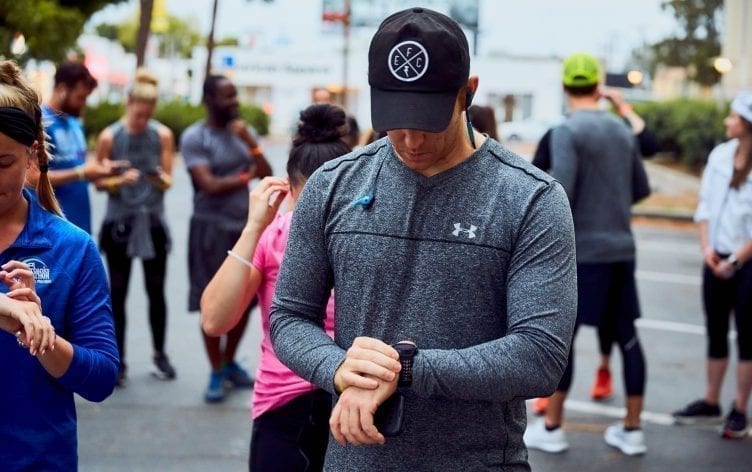
Walking a marathon is a big challenge, and whether or not you’re new to the distance, sometimes you have to remind yourself of what not to do on race day. To successfully reach the finish line — and have fun in the process — follow this advice on seven common marathon walking mistakes to avoid.
NOT KNOWING THE CUT-OFF TIMES
Unfortunately, not all marathons or running races are walking-friendly. Before you register for a marathon, know any time limits on the course or at the finish line. It’s common for big marathons to have a six-hour time limit for the finish and a three-hour limit to reach the half-marathon point. If you think this pace is faster than you can walk, or even close to it, you’ll be better off searching for another event with more relaxed time constraints. There’s nothing worse than training for an event and not being able to cross the finish line after you’ve just spent six-plus hours on the course.
CHANGING YOUR DIET PRE-RACE
When it comes to a big event, routine is the way to go. If you have a meal you usually eat prior to your long training walks, don’t switch it up the morning before the race. Sticking to what you know won’t upset your stomach and also avoid eating more than you normally do.
During the race, the same can be said for trying new energy drinks, gels or bars. Make sure to carry the ones you’ve already tried out during training and avoid new offerings at the aid stations, since anything new can lead to gastrointestinal distress.
TRYING OUT NEW GEAR ON RACE DAY
When you’ve got a big race, it’s a good idea to buy new shoes half-way through training so you don’t put too many miles on any one pair. However, trying new clothing and shoes that are different from the gear you’ve been training in can lead to blisters and chafing you won’t want to deal with on race day.
Instead, try out all new gear at least once during training before the race. Even if it’s the same shoe model as the one you’ve been wearing in training, it’s a good idea to use them a few times to make sure there aren’t any defects or discomfort that could pop up during the race. By that time, it will be too late to make any necessary adjustments.
HEADING INTO THE EVENT UNDER-TRAINED
Many people think that just because you plan to walk a marathon instead of run it, you don’t need to train as much to reach the finish. But this line of thinking is a big mistake. Just like any other endurance event, you’ll need to put in sufficient training time to complete the marathon distance. Walking for longer than you’ve trained for is a significant strain on your muscles and joints, which can lead to pain, injury and even end your race.
For this reason, follow a dedicated walking program that slowly builds your mileage up to the marathon distance. In general, you’ll need to be able to walk 4–5 days per week for about an hour and dedicate one day per week to your long-distance day. Your long-distance day will mimic race day, and should increase incrementally until you are able to walk for 4–5 hours or close to the time you expect it to take to finish your event.
NEGLECTING YOUR TECHNIQUE
Distance walking requires good form and technique to maximize efficiency and conserve your energy. Over-striding, not using your arms enough and leaning too far back are common bad habits you can slip into on race day because you’re trying to walk faster than you normally do.
Work on your technique during training and focus on maintaining correct form during your race. Keep your steps short and quick to protect your hips and knees, swing your arms with a 90-degree bend in the elbows and lean slightly forward with your head and shoulders to engage your core. Following these basic principles makes it much easier on your body as the miles start to add up.
STARTING TOO FAST
Since most marathons are running events, it’s easy for walkers to get pulled out at too fast a pace with the crowd of runners. The problem is, if you start a long-distance event at a pace you haven’t trained at, eventually it takes a toll and causes you to slow your pace significantly. By the mid-way point, you could find yourself off your goal pace and be in danger of not finishing the event either from fatigue or not meeting the required cutoff times.
For this reason, it’s best to use a pacing device and stay within your pre-determined heart rate zones and pace per mile. In fact, it’s often a better idea to err on the other side, beginning at a pace that’s a little slower than your training or goal pace. This makes it easier to pick up the pace after the initial energy of your competitors has started to fall off and keeps you feeling fresh in the latter stages of the race.
FORGETTING TO TAKE CHAFING PRECAUTIONS
Chafing and blisters are common during long-distance events like a marathon and they can be incredibly uncomfortable. For chafing, using a balm on spots where there’s friction between your clothing and skin is a must. For blisters, wear moisture-wicking socks; even using something like cornstarch to keep your feet dry can help.















